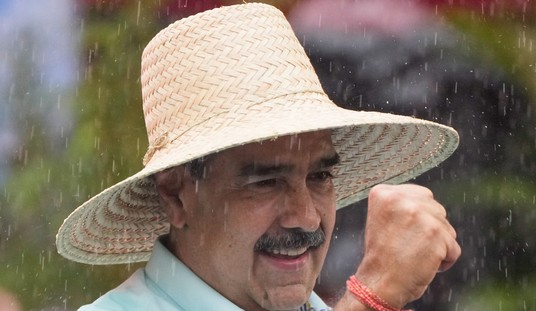So, I bet you’ve heard about the airline incident between a woman and Texas Democratic Congresswoman Sheila Jackson Lee. Katie wrote about it. In all, Jean-Marie Simon was booted from her first class seat on a United flight for Lee. Simon was obviously upset, voiced her objections, and was even threatened with being forced off the flight. She was eventually given a $500 voucher for her pre-paid seat and relocated to economy class. She alleges that United gave the Texas Democrat preferential treatment.
The saga got even worse when Lee accused Simon of racism regarding this matter.
I noted that this individual came toward me and took a picture. I heard later that she might have said “I know who she is.” Since this was not any fault of mine, the way the individual continued to act appeared to be, upon reflection, because I was an African American woman,
— Sheila Jackson Lee (@JacksonLeeTX18) December 26, 2017
seemingly an easy target along with the African American flight attendant who was very, very nice. This saddens me, especially at this time of year given all of the things we have to work on to help people. But in the spirit of this season and out of the sincerity of my heart,
— Sheila Jackson Lee (@JacksonLeeTX18) December 26, 2017
if it is perceived that I had anything to do with this, I am kind enough to simply say sorry. I understand the airline is working to address the passenger’s concerns. I am glad of that. But as an African American, I know there are too many examples like this all over the nation
— Sheila Jackson Lee (@JacksonLeeTX18) December 26, 2017
. I hope one day, we will accept our collective diversity. Happy Holidays.” ine, the way the individual continued to act appeared to be, upon reflection, because I was an African American woman, seemingly an easy target along with the African
— Sheila Jackson Lee (@JacksonLeeTX18) December 26, 2017
Identity politics will eventually lead to you stepping on a rake—and Lee probably should have just enjoyed the holidays and commented on this matter after looking up Jean-Marie Simon, who, as Katie noted, is a human rights activist that focused on Guatemala for nearly a quarter century. She was covering the nation’s brutal 36-year civil war, living there between 1980-1988 as a photojournalist. Her work has been featured in Amnesty International, who I’m pretty sure don’t accept submissions from members of the Klan.
Recommended
Here’s a post from 2012 on the conflict:
Guatemala is deceptive. I know people think that in the 80’s it was a war zone.
But the country was very different from that. You knew things were going on, you sort of arrived in the capital and you did see soldiers all over the place but it was not like they were sand-bagging the main streets and car bombings and green zones and people running around in flak jackets.
In Guatemala City the army was targeting student leaders, unionists, and university professors. Picking them off one by one or in small groups. In fact, I think the word “desaparecer” (“to disappear”) as a transitive verb, first originated in Guatemala back in the 1960s.
[…]
After my experience in Guatemala I would say remember who the heroes are.
It’s so easy to forget how we were able to do our work in the first place and the only reason we had access to these events, whether documentary filmmaking or photography or reporting is because somebody in Guatemala risked their neck to show us something they wanted the rest of the world to see.
I think we should keep the focus on Guatemalans who risked themselves during this decade and many whom have never been recognized for this, that’s the most important thing to me.
Another article about her work from the Christian Science Monitor from 1988:
Like most other Americans, Jean-Marie Simon knew little about Central America's largest nation before she came to work here in the early 1980s when military oppression was its height. Ms. Simon's first trip to Guatemala, one she thought would be a three-month visit and a ``steppingstone'' in her photography career, became a seven-year obsession with the country.
Simon, now considered the leading authority on human rights in Guatemala, has compiled her work, both photographs and research, into a book called ``Guatemala: Eternal Spring - Eternal Tyranny.''
The book documents the most recent episode in Guatemala's violent history. It begins with the year 1980 - when the country was ruled by Gen. Romeo Lucas Garc'ia, considered the nation's most brutal head of state - and ends with 1987, the second year of civilian rule in nearly two decades.
Here are some of her photographs from Guatemala. The description notes, “The photographs reflect all sides of the war: government death squads, the armed opposition, beleaguered internal human rights groups, and a civilian population for whom opposition meant death or exile.”
Here’s The New York Times’ 2012 post about her account of the 1982 coup that saw Gen. Efraín Ríos Montt seize power. Gen. Montt has since been tried and convicted for war crimes and genocide. In 2013, his conviction was overturned and his retrial is set to begin in the near future.
Efraín Ríos Montt, a former Guatemalan general who is now bespectacled and gray-haired, now insists – through his lawyers – that he never issued orders that left thousands of his countrymen dead or disappeared in the 1980s.But Jean-Marie Simon remembers how on March 23, 1982 – the day he seized power in a coup – he looked every bit in control. Indeed, his rule would be marked by some of the worst atrocities that befell that Central American nation, where he now faces charges of genocide and war crimes.
“I wish this trial would have happened 30 years ago, when he had a long life ahead of him in prison,” said Ms. Simon, who spent most of the 1980s photographing in Guatemala. “It is so disingenuous to say, ‘I didn’t know’ or ‘I wasn’t in control of the army.’ He was the commander in chief, he had command responsibility for the troops below him. Like a commander in the field once told us, there’s a very short leash between us and the National Palace.”
This week, while Mr. Ríos Montt is under house arrest, Ms. Simon is reprinting her book “Guatemala: Eterna Primavera, Eterna Tirania,” a chronicle of the worst of the war years that builds upon her 1988 volume “Guatemala: Eternal Spring, Eternal Tyranny.” This time, she has raised $20,000 through Kickstarter to help produce 4,000 copies on glossy stock and with sewn bindings that will be sold for about $10 each. More important, she has set aside some 1,000 copies to be given away to schools and teachers in Guatemala.
Yeah, a human rights activist and a photojournalist who captured the most brutal aspects of a Latin American nation’s civil war—this doesn’t sound like the makings of a racist. Ms. Simon was upset rightfully that she was bumped from her seat. And apparently this isn’t the first time Rep. Lee has acted ridiculously on an airline.
I saw Sheila Jackson-Lee on a domestic flight two years ago. While I was walking back to coach, she was throwing a hissy fit in First Class over why the steward had to gate-check her carry-on. (It was too big to fit in the overhead.) She threw a tantrum worthy of a 3-year-old.
— David Martosko (@dmartosko) December 26, 2017
(H/T Washington Times)

























Join the conversation as a VIP Member